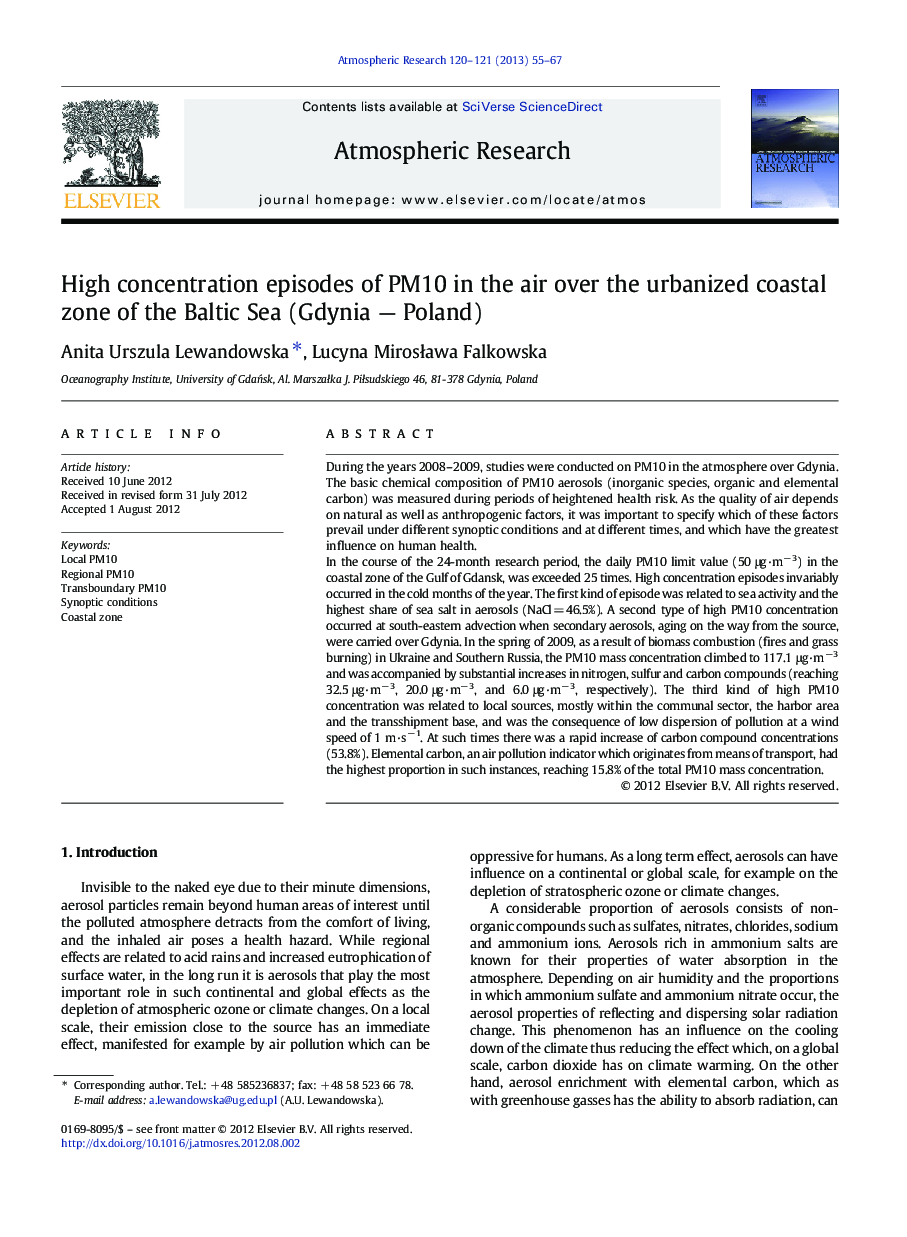| کد مقاله | کد نشریه | سال انتشار | مقاله انگلیسی | نسخه تمام متن |
|---|---|---|---|---|
| 4450123 | 1620545 | 2013 | 13 صفحه PDF | دانلود رایگان |

During the years 2008–2009, studies were conducted on PM10 in the atmosphere over Gdynia. The basic chemical composition of PM10 aerosols (inorganic species, organic and elemental carbon) was measured during periods of heightened health risk. As the quality of air depends on natural as well as anthropogenic factors, it was important to specify which of these factors prevail under different synoptic conditions and at different times, and which have the greatest influence on human health.In the course of the 24-month research period, the daily PM10 limit value (50 μg·m− 3) in the coastal zone of the Gulf of Gdansk, was exceeded 25 times. High concentration episodes invariably occurred in the cold months of the year. The first kind of episode was related to sea activity and the highest share of sea salt in aerosols (NaCl = 46.5%). A second type of high PM10 concentration occurred at south-eastern advection when secondary aerosols, aging on the way from the source, were carried over Gdynia. In the spring of 2009, as a result of biomass combustion (fires and grass burning) in Ukraine and Southern Russia, the PM10 mass concentration climbed to 117.1 μg·m− 3 and was accompanied by substantial increases in nitrogen, sulfur and carbon compounds (reaching 32.5 μg·m− 3, 20.0 μg·m− 3, and 6.0 μg·m− 3, respectively). The third kind of high PM10 concentration was related to local sources, mostly within the communal sector, the harbor area and the transshipment base, and was the consequence of low dispersion of pollution at a wind speed of 1 m·s− 1. At such times there was a rapid increase of carbon compound concentrations (53.8%). Elemental carbon, an air pollution indicator which originates from means of transport, had the highest proportion in such instances, reaching 15.8% of the total PM10 mass concentration.
► We isolated instances of high PM10 concentrations under different synoptic condition.
► Local, regional and transboundary sources of high PM10 aerosol concentrations episodes were identified.
► Mass concentration of PM10 aerosols cannot be treated as a reliable indicator of air quality.
► We advise to use markers of air pollution (e.g. EC) for analysis of urban air pollution.
Journal: Atmospheric Research - Volumes 120–121, February 2013, Pages 55–67